Cardiovascular Exercise
Updated:
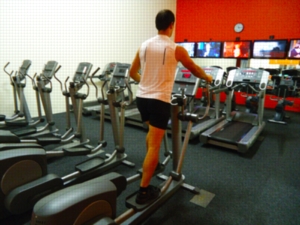
What is Cardiovascular Exercise?
Cardiovascular exercise is any form of physical activity that elevates an individual’s heart rate (usually to around 60 – 85% of their maximum heart rate) for a sustained period of time (usually greater than 20 minutes). Cardiovascular exercise (also known as aerobic exercise) is a vital component of general fitness and has numerous health and wellbeing benefits.
This guide will help you to achieve the maximum cardiovascular benefit from your exercise regime and ensure you experience definite improvement in your level of cardiovascular fitness.
From an injury perspective, cardiovascular exercise is usually safe to perform provided it does not cause or increase pain during exercise or after exercise with rest (e.g. the next night or upon waking the following morning). You should discuss the suitability of any new exercise regime with your physiotherapist or doctor prior to beginning.
Benefits of Cardiovascular Exercise
Some of the main health benefits associated with the performance of regular cardiovascular or aerobic exercise at an appropriate intensity and duration include:
- Reduced blood pressure
- Reduced cholesterol levels
- Reduced risk of developing coronary artery disease
- Reduced risk of heart attack or stroke
- Increased bone density
- Increased muscular endurance and strength
- Improved joint function
- Aid weight loss and reduction in body fat
- Increased metabolic rate
- Reduced likelihood of developing type II diabetes
- Reduced risk of developing some cancers
- Improved activity tolerance
- Reduced injury likelihood during other physical activities
- Promotion of psychological wellbeing
Warming up
Performance of an appropriate warm up prior to performing cardiovascular exercise is essential to prepare the body for exercise and minimise the likelihood of injury. This should primarily comprise of performance of the type of cardiovascular exercise you are about to perform at low intensity (usually approximately 50% of the target exercise intensity) for approximately 5 – 10 minutes. For example if you are about to go for a run, begin with light jogging, or if you are about to go for a ride, begin riding for 5 – 10 minutes at low intensity.
For more detailed information on performing a warm up see – Warming up and Cooling Down.
F.I.T. Principles
To ensure maximal benefit from aerobic exercise with significant cardiovascular improvement, it is vital you follow F.I.T. principles. This involves regulating the Frequency, Intensity and Time (duration) of training to ensure your cardiovascular exercise meets the minimum requirements for improvement:
Frequency
To ensure cardiovascular benefit, you should aim to exercise between 3 and 5 times per week (with a minimum of 3 times per week for significant cardiovascular benefit). For sedentary individuals, it may be advisable to begin very conservatively with only 1 or 2 sessions per week initially and several recovery days between exercise sessions. As your fitness improves, it is generally advisable to gradually build up the frequency of training over a number of weeks until you eventually reach the target number of 3 – 5 exercise sessions per week. Your physiotherapist or doctor can advise on what type of exercise regime may be appropriate and when it can be commenced and progressed.
Intensity
Exercise should be performed at an intensity that elevates your heart rate to within the ‘training zone’. This is vital as research has demonstrated that exercising at an intensity below your ‘training zone’ will not produce much cardiovascular improvement. In addition, exercising at an intensity above your ‘training zone’ will often be too hard to maintain and may be harmful for sedentary individuals, increasing their risk of injury or illness.
The optimal training intensity or ‘training zone’ can be determined by measuring your heart rate. For optimal benefits, your cardiovascular training should elevate your heart rate to 65 – 80% of your maximum heart rate (i.e. your ‘training zone’). Your maximum heart rate (measured in beats per minute) can be determined by subtracting your age from 220. For example someone who is 40 years of age would have a maximum heart rate of 180 beats per minute (i.e. 220 – 40 = 180). Therefore a 40 year old should aim to exercise at an intensity that elevates their heart rate to approximately 117 – 144 beats per minute (i.e. 65 – 80% of 180).
Sedentary individuals or beginners should generally begin exercising at conservative intensities (approximately 50 – 60% of their maximum heart rate) as recommended by a doctor or physiotherapist. As fitness improves (and under guidance of the treating practitioner), the intensity of training may be gradually increased over a number of weeks until you are eventually performing your cardiovascular exercise at the target intensity of 60 – 85% of your maximum heart rate.
If you cannot exercise at 60 – 85% of your maximum heart rate due to injury, illness or poor functional capacity, some cardiovascular benefit will still be obtained by exercising at lower intensities of 50 – 60% of your maximum heart rate. This training intensity can also assist with reduction of body fat, cholesterol and blood pressure.
To determine your heart rate, you can either use a heart rate monitor or check your pulse with your index finger and middle finger either at the radial artery (located at the thumb side of the wrist on the front of your palm) or carotid artery (located at the side of your neck just below the jaw) (figure 1). Adjust the pressure of your fingers to improve sensitivity – too light or hard may prevent you feeling your pulse.
Count the number of beats over a 15 second period and multiply it by 4 to determine your heart rate in beats per minute. Or you can measure over a 30 second period and multiply by 2.
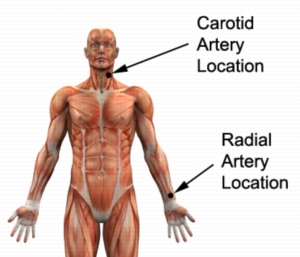
Time
To ensure cardiovascular improvement, you should aim to exercise continuously for approximately 20 – 60 minutes each session (with a minimum of 20 minutes per session for significant cardiovascular benefit). For sedentary individuals, it may be advisable to begin with a low duration of training as guided by your physiotherapist or doctor (e.g. 5 – 10 minutes). Then as your fitness improves, it is generally advisable to gradually build up the duration of training over a number of weeks until you eventually reach the target duration of 20 – 60 minutes per session.
Types of Cardiovascular Exercise
Any form of physical activity can be considered cardiovascular or aerobic exercise provided it elevates the heart rate sufficiently and for the required period of time. Some of the more common types of cardiovascular exercise include:
- Jogging
- Swimming
- Riding
- Use of an elliptical trainer
- Rowing
- Fast walking (especially up hills)
Cool Down
To improve recovery following exercise and maintain adequate flexibility to minimise injury likelihood during activity, a cool down should be performed following aerobic exercise. This should comprise of light activities such as walking, light jogging or other forms of aerobic exercise at low intensity for approximately 5 – 10 minutes followed by static cool down stretches of the major muscles that were used for the particular activity. Cool down stretches should be performed slowly and gently, taking the muscle towards its end of available range and holding at a mild to moderate stretch for periods of 30 – 60 seconds. Static cool down stretches following sport or activity help to improve flexibility and hasten the recovery process.
- View more information on Warming up and Cooling Down.
- View Leg Stretches.
- View Arm Stretches.
Cardiovascular Exercise Progression

Members Only ContentBecome a PhysioAdvisor Member to gain full access to this exclusive content. For more details see Become a Member. Already a member? Login Now
Cardiovascular Exercise Summary

Members Only ContentBecome a PhysioAdvisor Member to gain full access to this exclusive content. For more details see Become a Member. Already a member? Login Now
Recommended Reading
- View detailed information on a Return to Running Program.
- View detailed information on Bike Setup.
- View detailed information on Choosing a Shoe.
- View detailed information on Warming up and Cooling Down.
- View detailed information on Running Injuries.
- View detailed information on Swimming Injuries.
- View detailed information on Cycling Injuries.
- View our Injury Diagnosis Guides.
Relevant Physiotherapy Exercises
- View Leg Stretches.
- View Arm Stretches.
- View Lower Body Massage Ball Exercises
- View Lower Body Foam Roller Exercises
- View Upper Body Massage Ball Exercises
- View Upper Body Foam Roller Exercises
- View Arm Strengthening Exercises
- View Arm Stretches.
- View Balance Exercises
Physiotherapy Products to assist with Exercises
-
 AllCare Wobble Board (Red – ACWOBRD)
AllCare Wobble Board (Red – ACWOBRD) -
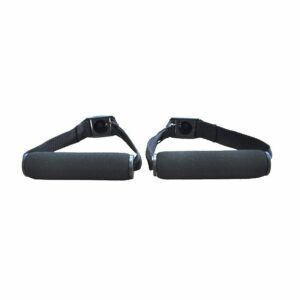 AllCare Adjustable Exercise Handles (Pair)
AllCare Adjustable Exercise Handles (Pair) -
 AllCare Band
AllCare Band -
 Fitness Ball Pro – Loumet
Fitness Ball Pro – Loumet -
 AllCare Tubing
AllCare Tubing -
 AllCare Spikey Massage Ball
AllCare Spikey Massage Ball -
 AllCare Foam Roller Round
AllCare Foam Roller Round -
 66 Fit Pilates Ball
66 Fit Pilates Ball -
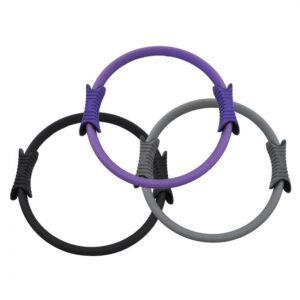 Allcare Pilates Ring
Allcare Pilates Ring -
 66Fit Wooden Adjustable Decline Board
66Fit Wooden Adjustable Decline Board -
 66 Fit Height Adjustable Aerobic Step
66 Fit Height Adjustable Aerobic Step -
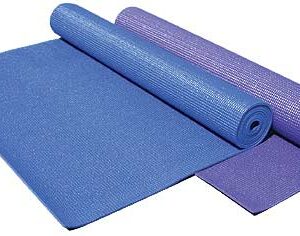 Comffit Pilates & Yoga Sticky Mat 6mm
Comffit Pilates & Yoga Sticky Mat 6mm -
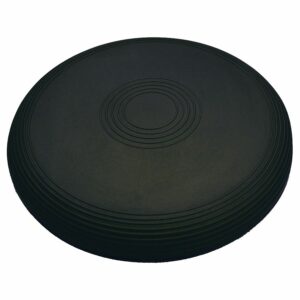 Lournet Stability Dura Disc
Lournet Stability Dura Disc -
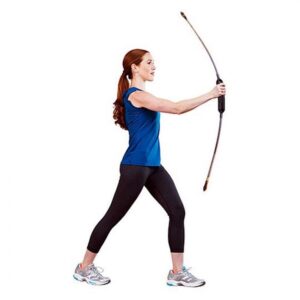 Body Blade
Body Blade -
 AllCare Vinyl Ankle Weight (Single)
AllCare Vinyl Ankle Weight (Single)
To purchase physiotherapy products to assist with cardiovascular exercises click on one of the above links or visit the PhysioAdvisor Shop.
Find a Physio to assist with Cardiovascular Exercise
Find a physiotherapist who can assist with cardiovascular exercise and can treat associated injuries.
Become a PhysioAdvisor Member

Link to this Page
If you would like to link to this article on your website, simply copy the code below and add it to your page:
<a href="https://physioadvisor.com.au/exercises/cardiovascular”>Cardiovascular Exercise – PhysioAdvisor.com</a><br/>PhysioAdvisor offers detailed physiotherapy information on how to perform cardiovascular exercise and aerobic exercise training for maximal benefit.
Return to the top of Cardiovascular Exercise.





